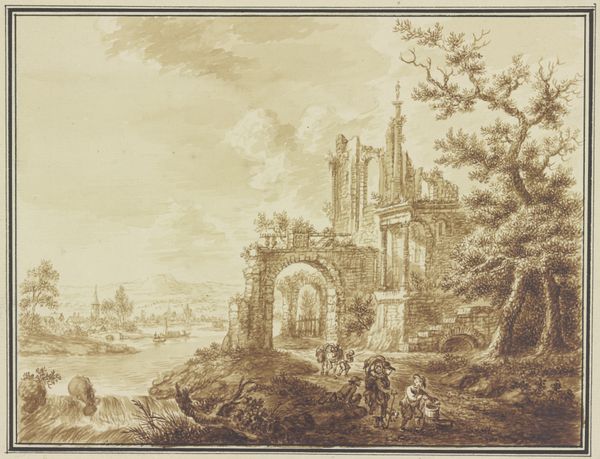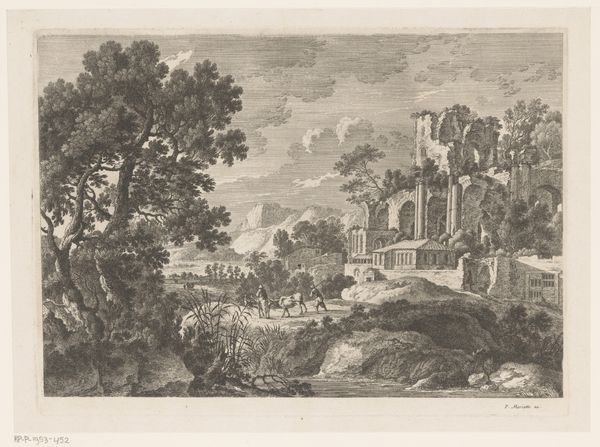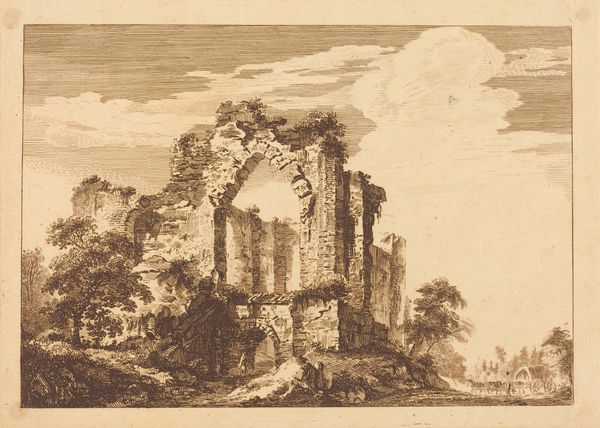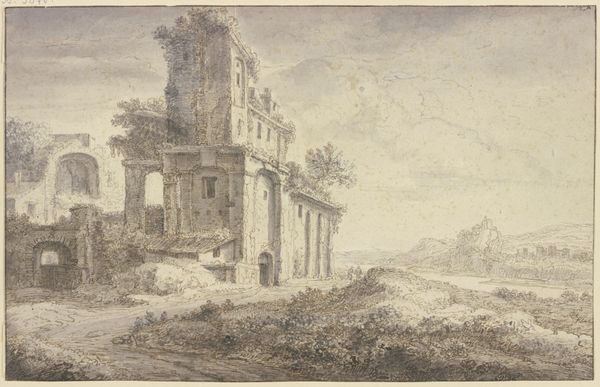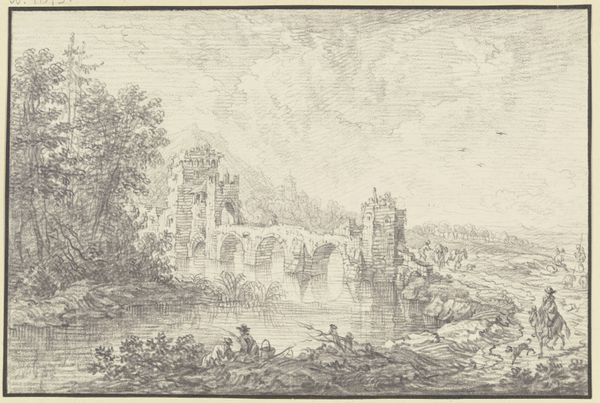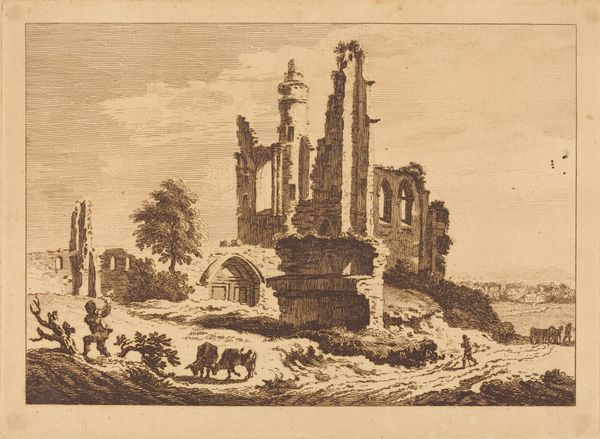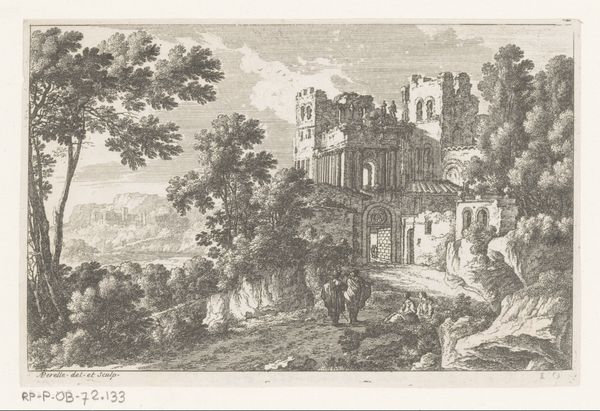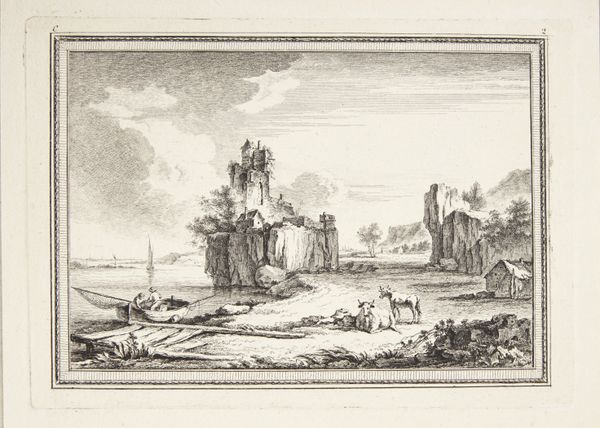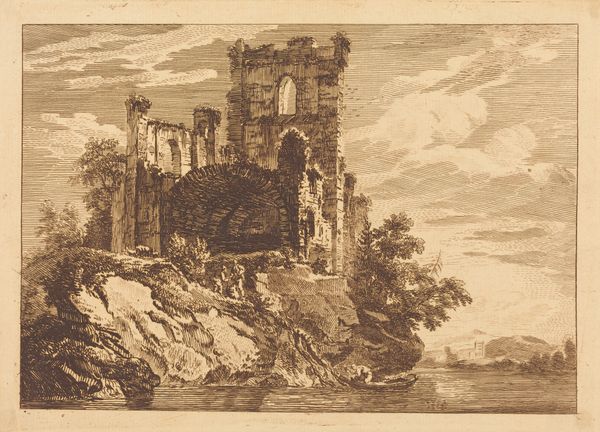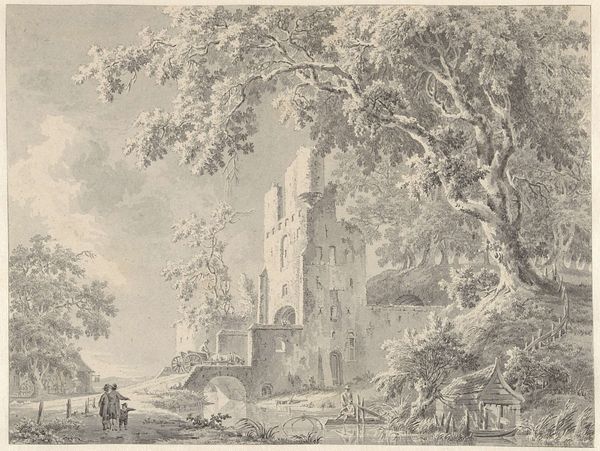
Links unter einem Baum Ruinen, rechts Ausblick auf eine Flußlandschaft, im Vordergrund ein rastendes Paar mit zwei Kindern
0:00
0:00
drawing, etching, ink, indian-ink, architecture
#
drawing
#
etching
#
landscape
#
etching
#
ink
#
indian-ink
#
architecture
Copyright: Public Domain
Curator: Here we have a drawing, skillfully etched in ink—specifically, with a distinctive Indian ink—by Franz Hochecker. The work, titled "Links unter einem Baum Ruinen, rechts Ausblick auf eine Flusslandschaft, im Vordergrund ein rastendes Paar mit zwei Kindern," presents us with ruins beside a tree with, to the right, the vista of a river landscape where a resting couple and two children occupy the foreground. Editor: It's wonderfully melancholy. A family picnic happening adjacent to such potent symbols of collapse. I'm immediately drawn to that stark contrast. Curator: Precisely. The ruin functions not just as aesthetic backdrop, but as a weighty historical marker, subtly pointing to the transience of power, the inevitable decline of civilizations, doesn't it? Hochecker, likely influenced by his era's fascination with antiquity, places this in stark relief against the everyday simplicity of family life. Editor: That placement feels almost…staged. Was this kind of Arcadian scene something patrons were seeking? A reassurance, perhaps, in the face of unsettling societal shifts? Like, 'Yes, empires fall, but the family endures?' Curator: It reflects a definite sensibility. Representations like this, especially rendered with etching techniques, allowed for relatively wider dissemination, aligning with a growing middle-class interest in picturesque views and sentimental themes. This etching speaks to a hunger for narratives imbued with both moral reflection and comforting stability. Editor: And consider that the architectural subject, the etching medium, all become markers of privilege too, no? Creating that and possessing the image both involve certain social strata… making even a wistful scene of decline a kind of power statement. Curator: An excellent point. The very act of observing and collecting such images reaffirms social status, offering a mediated experience of history and nature filtered through a specific class perspective. This piece deftly navigates personal sentiment and public consumption. Editor: It certainly gives us a lot to think about regarding the role that even simple-seeming images play in constructing—and reinforcing—social ideas and ideals. Curator: Yes, it reveals that visual culture always participates in broader social, political, and economic landscapes. Hochecker offers more than meets the eye.
Comments
No comments
Be the first to comment and join the conversation on the ultimate creative platform.
